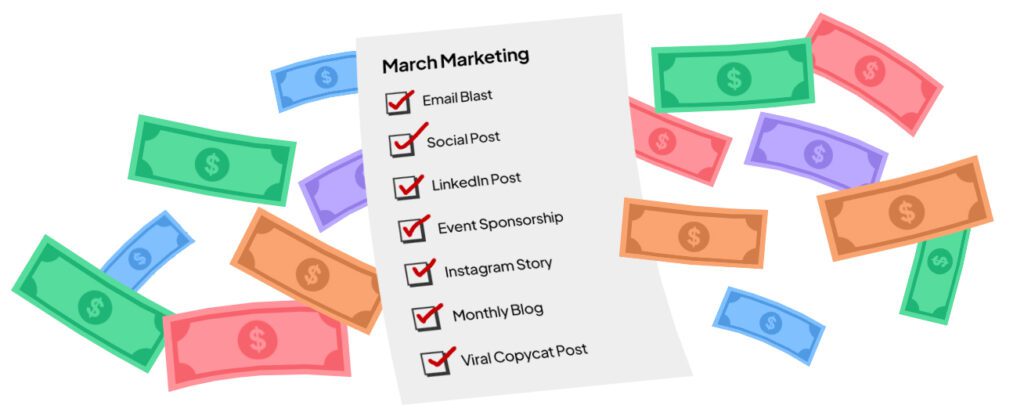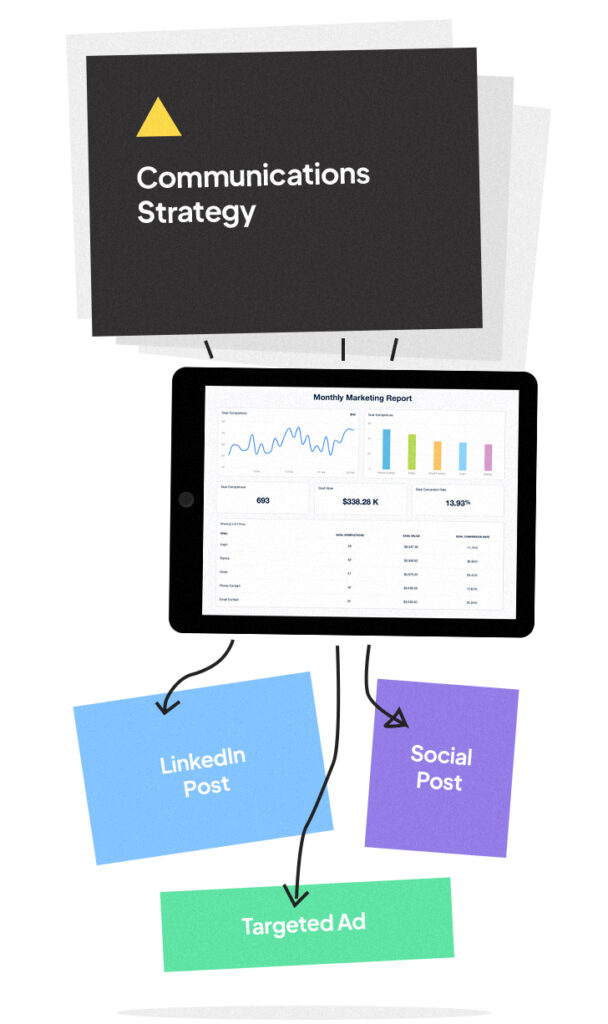Stop Spending Your Marketing Budget. Start Investing It.
You’ve got a marketing budget and a pile of things to do, a long task list that would keep any marketer busy throughout their workday. The uncomfortable truth? You're probably making the same mistake as most of the organizations we initiate work with - they spend their budget instead of investing it.
Spending feels productive. It fills the calendar. It keeps the Slack channel busy. But when we dig into what’s actually moving the needle on brand awareness, pipeline, and revenue? The list gets a lot shorter.
So let’s talk about the difference between busy work and brave work - and how to build a marketing budget that actually pays you back.
Spending
The Busy Work That Feels Like Progress (But Isn’t)
These are the activities that check a box but don’t build equity in your brand. They make your marketing team look busy, but when the quarter ends, you’re asking, “What did that actually do for us?”
Here’s where budgets get burned:
- Posting just to post: Random social content with no campaign strategy? That’s noise, not marketing.
- Endless tweaks: New taglines, endless revisions, six versions of a PDF - that’s not refining, it’s spinning wheels.
- Ad-hoc email blasts: No nurture strategy, just vibes.
- Low-impact sponsorships: If it’s not driving leads or growing brand recognition with the right people, it’s just a logo on a banner.
- Data without action: Reporting that gets built but never reviewed, or worse, reviewed but not used to refine your approach.
This stuff feels like marketing. It’s not. It’s motion without momentum.


Investing




The Strategic Moves That Pay Off Long-Term
Now we’re talking about work that builds brand equity, creates demand, and generates revenue over time. This is where marketing stops being a cost centre and starts being a growth engine.
Here’s where to put your money if you want it to work for you:
- Owned content strategy: Blog, video, pillar pages - content that drives SEO, brand voice, and lead capture, all in one.
- Campaign-driven marketing: Integrated, time-bound, goal-oriented. Not “we’re posting,” but “we’re driving X result by Y date.”
- Marketing automation: Email nurture, lead scoring, conversion tracking - scalable tools that build relationships while you sleep.
- Strong brand identity: Messaging, visuals, tone - the foundation that makes every tactic hit harder.
- High-impact paid strategy: Yes, ads but with targeting, conversion goals, and creative that actually gets attention.
- Measurement that matters: Attribution, ROI tracking, insight-to-action feedback loops. We’re not just reporting. We’re learning and evolving.
Investing means building the machine, not just oiling random parts and hoping they run.
Finding the Balance
Productive Action Meets Strategic Investment
Not everything you do will be legacy-level work, and that’s okay. There’s room in a marketing budget for short-term action and long-term investment. The trick is making sure they’re aligned.
Ask yourself:
- Does this contribute to a larger strategy?
- Is this activity trackable, repeatable, or scalable?
- Am I building something that pays off next quarter and next year?
- Are we optimizing what’s working or just repeating old habits?
A great marketing budget has three layers:
- Foundational investment: Brand, website, positioning, automation.
- Campaign work: The quarterly pushes that drive visibility and action.
- Always-on marketing: The consistent presence, informed by data and driven by purpose.
Your Budget Should Build You Something
At Hughes&Co, we don’t build marketing plans that burn out. We build machines. Every dollar you spend should get you further down the path — to more leads, more conversions, more people saying, “That’s a brand I trust.”
So stop spending. Start investing.
Let’s build marketing that means business.
Related Articles


Elevate the way you do business.
Redefine your brand with Hughes&Co’s strategy chops, collaborative thinking, and ambition for better. Your focus is growth. So is ours.





